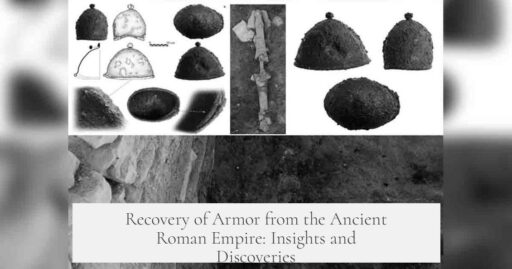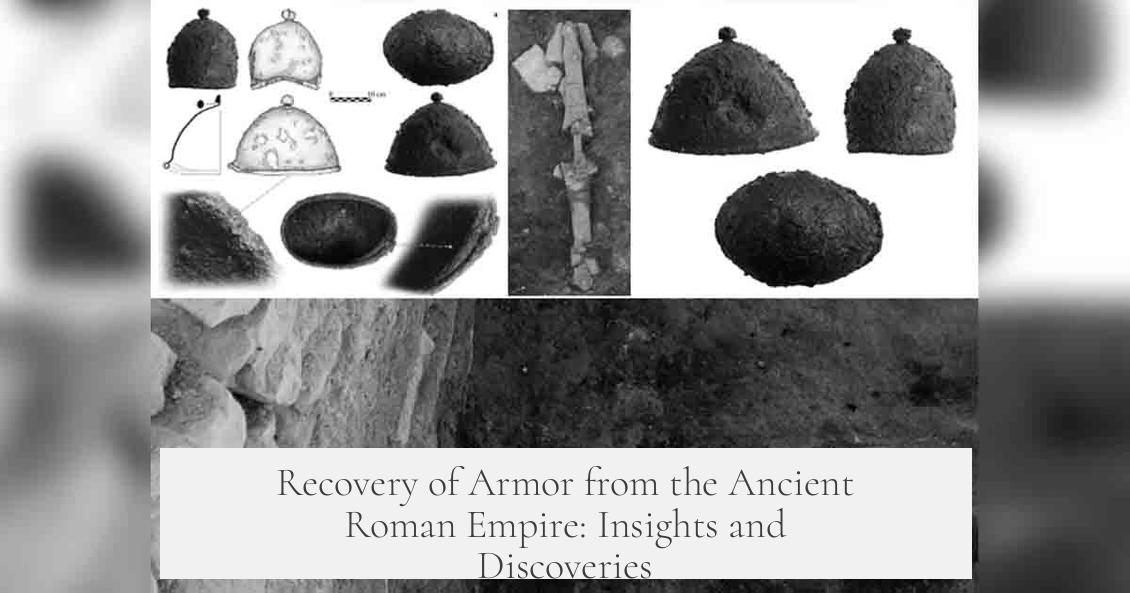Yes, archaeologists have recovered armor from the Ancient Roman Empire, though complete sets are rare and most finds consist of fragments or partial items. The reasons include the materials used in Roman armor, the passage of time, and burial conditions. Some significant discoveries reveal detailed insights into Roman military gear.
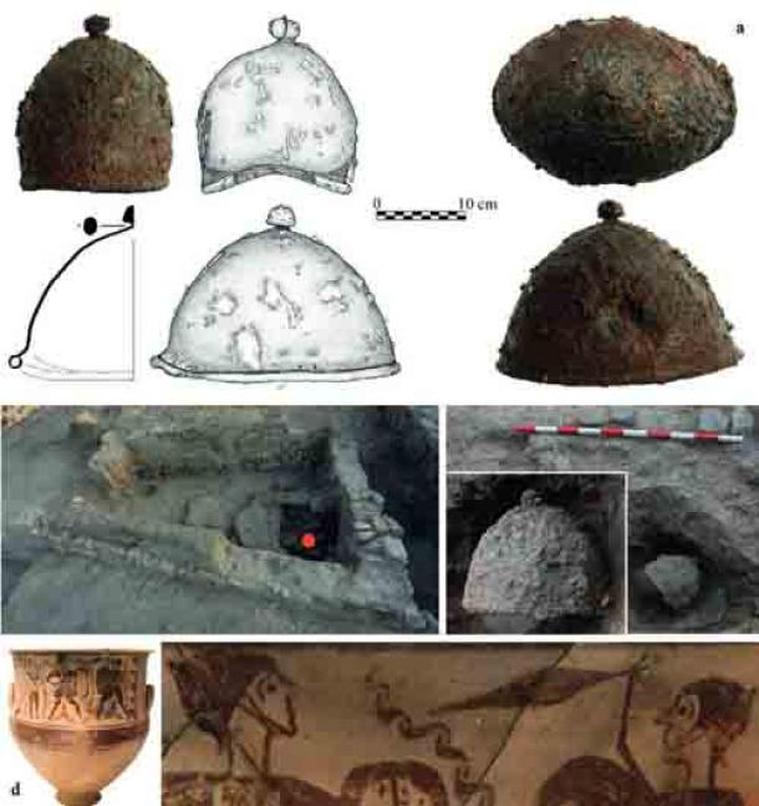
The best-known complete shield, or scutum, is unique. Only one has survived almost whole. Other shield parts, mainly metal edges, have turned up but rarely intact. Most Roman shields were made from wood and canvas, which decomposed after centuries underground.
Weapons such as gladii (short swords) and pila heads (javelin tips) are more commonly found. Though corroded and damaged, these metallic pieces endure better in the soil than organic materials like leather and wood.
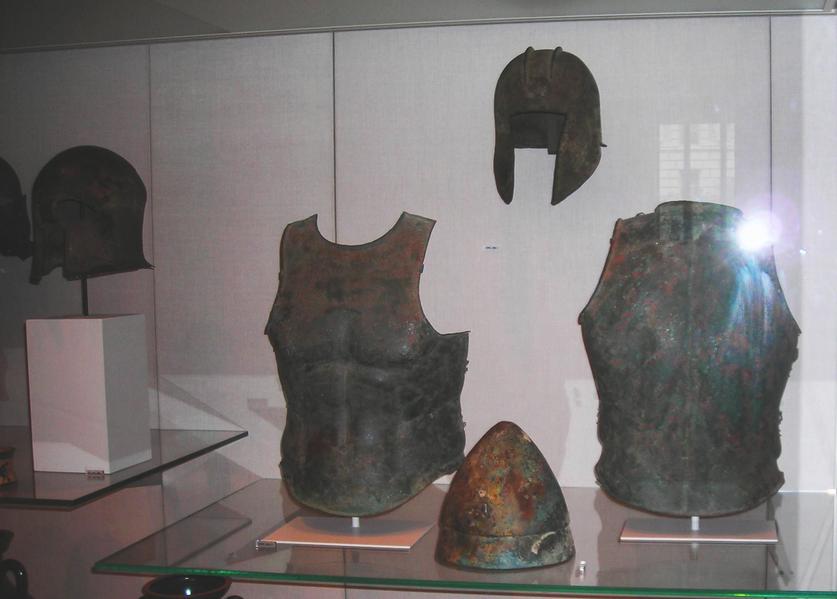
Helmets have been found scattered in various sites, mostly as fragments or partial items. Styles recovered include:
Full sets of armor are difficult to find because much of the Roman soldier’s body armor consisted of organic materials like leather and fabric. These materials rarely survive more than a few centuries underground. Standard legionary armor was often leather-based or textile-reinforced, so even wooden or canvas shields disintegrated long ago.
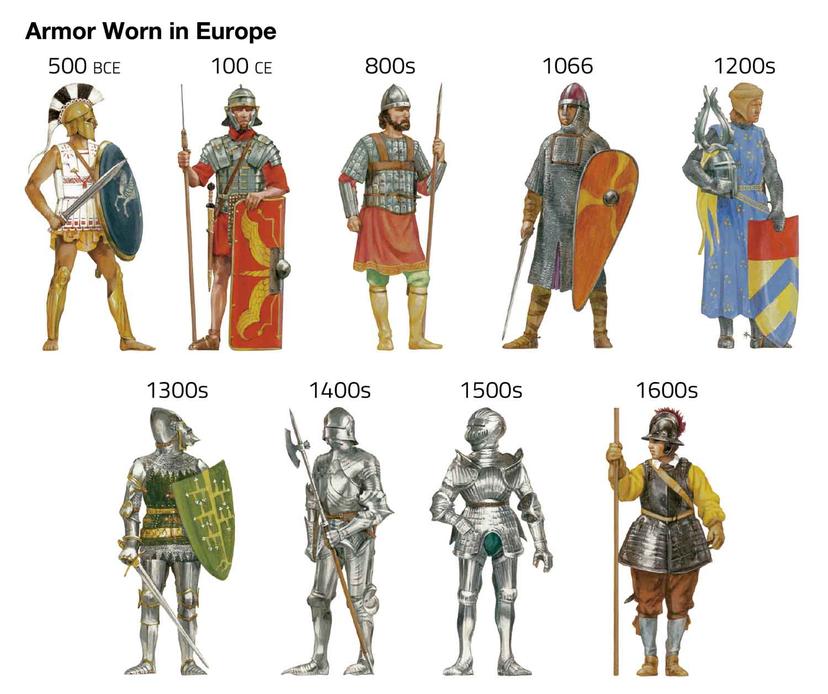
Still, several notable armor discoveries have surfaced. The Corbridge Hoard, found in 1964 in northern England, contained twelve partial suits of lorica segmentata, the famous segmented plate armor from around 50–150 AD. These fragments helped historians and archaeologists reconstruct the armor’s design and function. The hoard offers one of the clearest views of Roman armored soldier gear.
Fragments of other Roman armor types have been found and pieced together. These include:
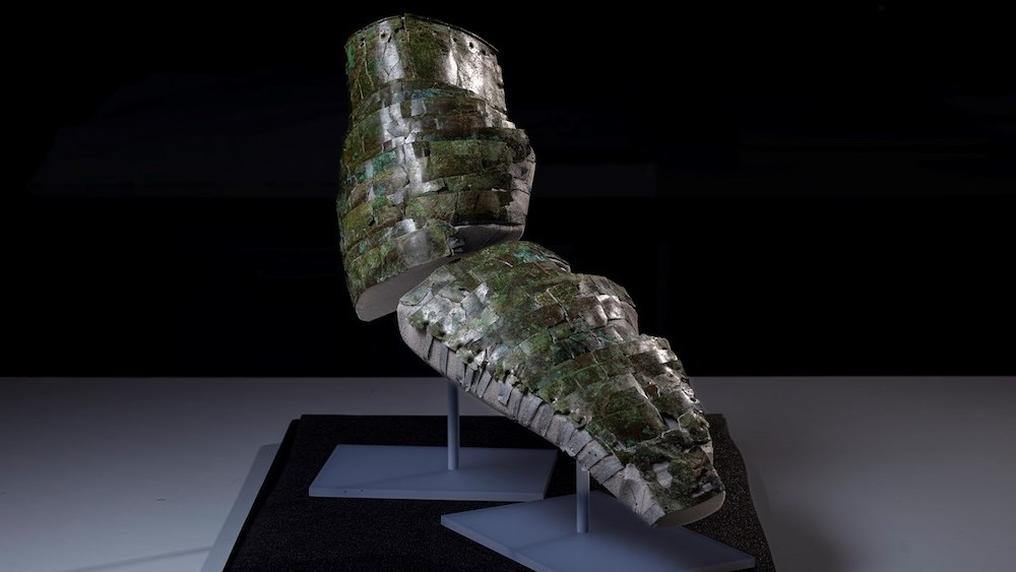
- Lorica hamata (chainmail) scraps
- Lorica squamata (scale armor), although rare
- Helmet fittings and components
An example is the discovery at Arbeia fort in England, where archaeologists uncovered a shirt of Roman chainmail along with sword fragments and sling bullets. Such finds provide direct evidence of the armor worn by Roman legionaries stationed on the empire’s frontiers.
In Wales, archaeologists found a full set of ceremonial armor, less common than military armor. This piece provides insights into parades or official Roman military displays rather than battlefield gear. Details on this find can be found through resources like the BBC article here: BBC News Wales.
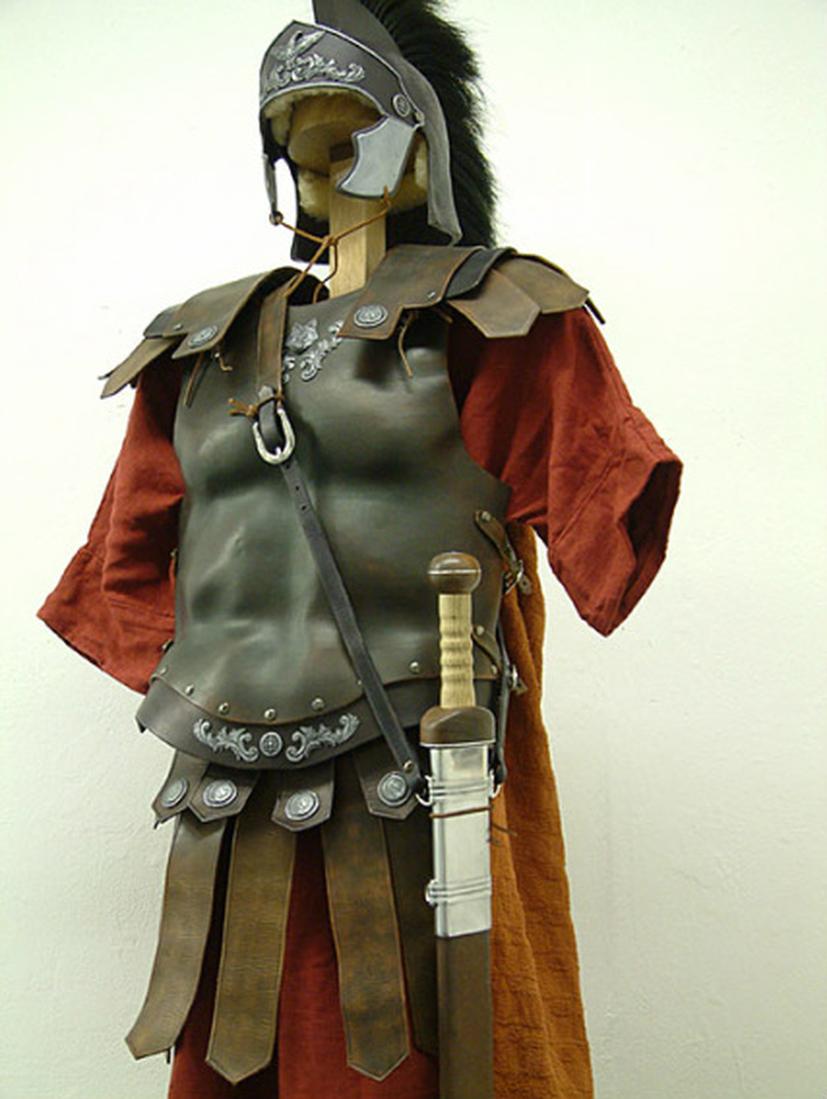
Armor from earlier periods, such as during the Punic Wars and the time of Hannibal (3rd century BC), is much scarcer. Armies often consisted of state militias using personal arms and armor, which veterans kept after service, leading to fewer artifacts in one place. Also, only a small fraction of soldiers wore heavy metal armor, such as hastati who often had simple metal chest plates that have not survived.
Pompeii and Herculaneum offer rare, well-preserved gladiatorial armor pieces. The volcanic ash preserved helmets and other equipment in good condition. These finds help historians study combat gear used in entertainment rather than the battlefield.

| Item | Description | Condition | Locations Found |
|---|---|---|---|
| Scutum (Shield) | One nearly complete shield, metal edging found often | Rare complete; partial common | Various Roman sites |
| Gladii and Pila | Short swords and javelin heads | Corroded fragments | Military sites |
| Lorica Segmentata | Segmented plate armor | Partial sets, mostly fragments | Corbridge Hoard, others |
| Lorica Hamata | Chainmail scraps | Small fragments | Arbeia fort |
| Helmets | Various styles identified | Partial, worn | Ribchester, Hallaton, Pompeii |
| Ceremonial Armor | Full set found | Complete | Wales |
Research continues to update knowledge of Roman armor with each new discovery. Reconstructions often rely on fragmentary evidence combined with Roman artwork and texts. Finds like the Corbridge Hoard are especially valuable for understanding the design and manufacturing techniques.
- Roman armor finds exist primarily as fragments and partial sets.
- Organic materials like leather rarely survive, limiting finds.
- Helmet fragments and metal weapons are most common.
- The Corbridge Hoard contains the most extensive lorica segmentata pieces.
- Complete ceremonial armor has been found in Wales.
- Pompeii yields well-preserved gladiatorial armor.
- Earlier military armor is less commonly discovered due to militia supplies and material decay.
Have we recovered any armor from the Ancient Roman Empire?
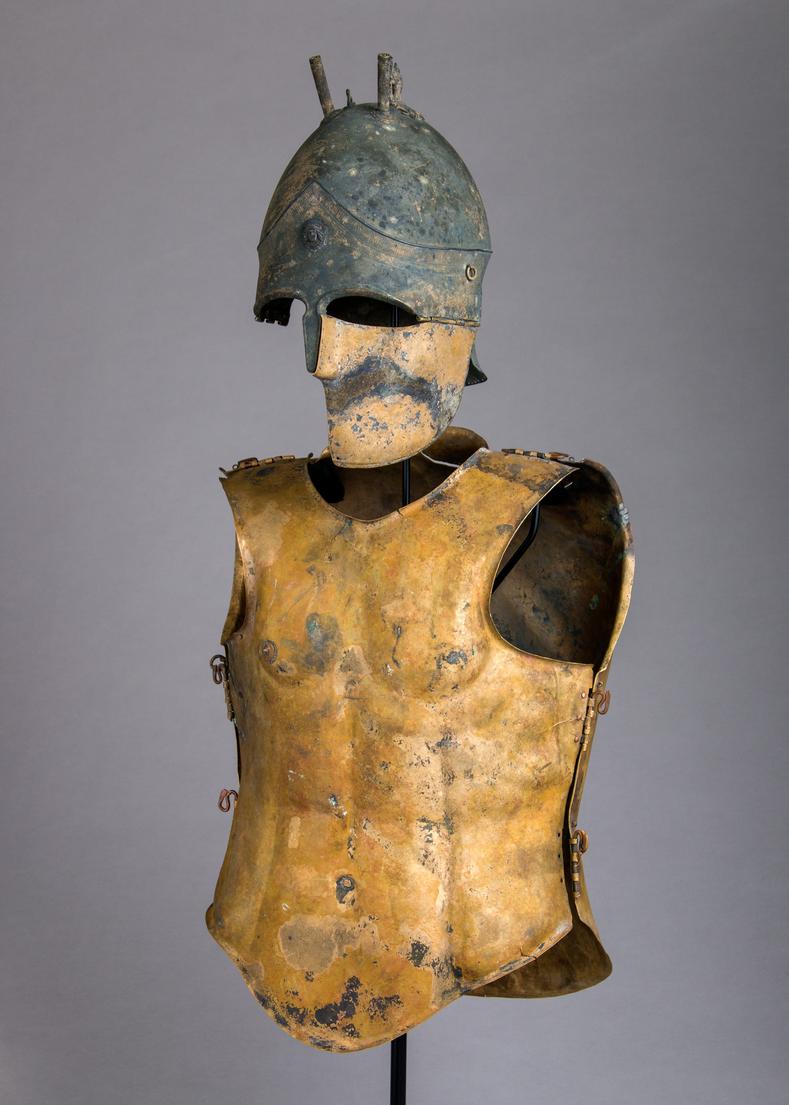
The short answer: Yes, but with many caveats. You might expect legions of golden, gleaming plates lining museum halls, but the reality is a bit murkier. Ancient Roman armor doesn’t often survive in full form, especially after two millennia of dirt, decay, and time’s relentless wear and tear. However, there are some fascinating discoveries that shine a light on what Roman soldiers might have worn and fought with.
Let’s unpack this Roman armor mystery step-by-step, throwing in some interesting finds and why full suits are so rare.
Why So Little Armor Survives?
First, it’s important to realize the everyday armor of Roman infantry was often made from organic materials like leather or wood. Modern archaeology relies heavily on metals surviving the ages, and while metal rusts, leather and wood simply rot away like yesterday’s lunch. This explains the major hole in the record of recovered Roman armor.
For instance, the standard Roman legionary shield, the scutum, was wooden, covered with canvas or leather, and edged in metal. Numerous stripe-like metal edges from shields have surfaced before, but amazingly, only one largely intact scutum shield has ever been found.
Similarly, leather armor and canvas banners simply don’t stand a chance underground. So, don’t expect to stumble on lots of original leather lamellar armor fragments—they’ve vanished into dust long ago.
Glimpses of Iron and Steel: Helmets and Chain Mail
Despite this, several metal helmets have been discovered in various states of preservation. These include famous finds like the:
While none are found in pristine condition, these helmets provide valuable insight into Roman military headgear. Additionally, at Arbeia, a Roman fort in Britain, archaeologists unearthed fragments of Roman chain mail (lorica hamata), along with sword fragments and sling bullets.
These metal bits help piece together how Roman soldiers were armored, especially in the popular image of Roman legionaries. Recoveries like these hint at substantial use of chainmail, which was more durable and more likely to survive centuries underground.
The Lorica Segmentata Puzzle
The highly recognizable Roman segmented armor, the Lorica Segmentata, presents an interesting case. Actual armor doesn’t survive whole very often, but in 1964, the discovery of the Corbridge Hoard brought to light twelve partial suits from Hadrian’s time (roughly 50-150 AD). These iron strips overlapped to form bands protecting the torso.
Archaeologists spent years trying to assemble these fragmented remains correctly. Initial attempts at reconstruction were wrong because the armor was complicated and unfamiliar to modern eyes. This discovery helps us understand the craftsmanship and design of Roman plate armor, which is more complex than a simple stack of plates.
Ceremonial Armor and Gladiator Gear: More Than Battle-Ready Metal
Another surprise comes from Wales, where a complete set of ceremonial Roman armor was found a few years back. Unlike everyday combat gear, ceremonial armor was often more ornate and may have been carefully stored or buried, increasing its chance of survival.
Roman gladiator armor is another bright spot in the archaeological record. Sites like Pompeii and Herculaneum, famously frozen in time by volcanic ash, have yielded remarkably well-preserved gladiator helmets and armor pieces. These finds give scholars and enthusiasts vivid glimpses into the life and death of entertainers who fought for survival and fame.
Weapons – The Other Half of the Roman Warrior’s Arsenal
Weapons like gladii (short swords) and pila (javelin heads) also appear in digs. While often corroded, they can be identified, giving clues to the combat styles of Roman soldiers. The scarcity of intact armor sometimes contrasts with the relatively better survival of metal weapons.
What About Ancient Armor from Hannibal’s Time?
It’s worth noting that armor from earlier periods, like the time of Hannibal (late 3rd century BC), is even rarer. Back then, armies were less uniform, often militia-based. Many soldiers had personal armor, spreading artifacts across time and place as they moved. Only a fraction wore metal armor, and the common front line troops often wore leather or metal heart plates, which haven’t survived.
In Summary: Roman Armor is a Puzzle, but Pieces Are There
The truth is, we have recovered fragments of armor, helmets, chain mail, and one remarkable shield from the Ancient Roman Empire. Armor survival is spotty thanks to the materials used, burial conditions, and the passage of time.
Exciting finds like the Corbridge Hoard and ceremonial armor in Wales show that metal armor pieces can and do survive. Gladiator armor from Pompeii offers a vivid snapshot of Roman martial culture. Each discovery adds a tile in the giant mosaic of Roman martial history.
So, next time you picture a Roman soldier, remember: his armor’s story mostly comes from bits and pieces, detective work, and a lot of imagination fueled by some outstanding finds.
What’s your favorite Roman armor piece? Would you rather wield a gladius or wear the iconic Lorica Segmentata? Share your thoughts below!
